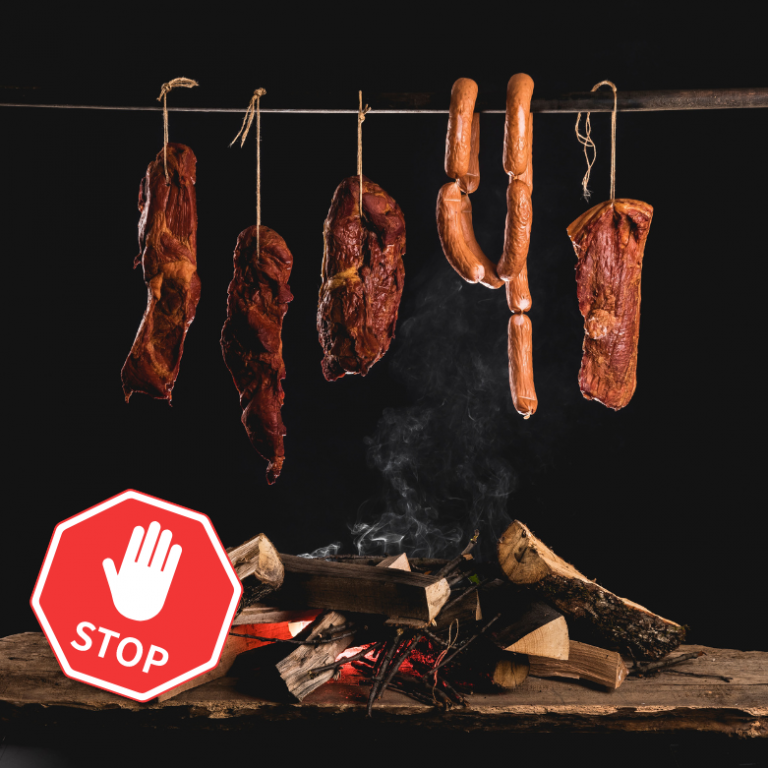Introduction: The Art of Smoking Meat and Common Mistakes
The ancient tradition of smoking meat has been passed down through generations of grill gurus and pitmasters. This technique imparts a unique, smoky flavor to the meat while tenderizing it to perfection. However, like any culinary endeavor, it comes with challenges. In this article, we’ll explore common mistakes, such as what to avoid when smoking meat, ensuring your journey to meat-smoking mastery is a smooth and delectable one.
The Smoking Essentials: Equipment Every Grill Guru Needs
Choosing the Right Smoker: Pitfalls and Preferences
The cornerstone of any smoking endeavor is, of course, the smoker itself. Selecting the right one can make a world of difference in your smoked meat outcome. From traditional offset smokers to modern pellet grills, each has its own nuances and idiosyncrasies. The key is to carefully weigh your needs, budget, and available space when making this pivotal decision.
Tools of the Trade: Must-Have Accessories for Smoking Success
In addition to the smoker, several indispensable accessories will elevate your smoking experience. A high-quality meat thermometer, for example, is crucial for monitoring internal temperatures, while heat-resistant gloves and a solid set of tongs facilitate safe handling. Don’t forget a reliable chimney starter for firing up your charcoal with ease.
Fueling the Fire: The Importance of Selecting Quality Wood and Charcoal
Decoding Wood Types: Flavor Profiles and Pairings
The type of wood you choose plays a significant role in the overall flavor profile of your smoked meat. From the sweet, fruity notes imparted by apple or cherry wood to the robust, earthy tones of hickory or mesquite, each wood imparts its own distinct character. Familiarize yourself with these profiles and experiment with pairings to find the perfect match for your protein. Consider using wood chips for smoking to add extra flavor.
Charcoal Conundrums: Lump vs. Briquette and When to Use Each
Another fuel-related conundrum is the choice between lump charcoal and briquettes. Lump charcoal, made from pure hardwood, burns hotter and produces less ash, while briquettes offer a consistent burn and are often more budget-friendly. Ultimately, the decision comes down to personal preference and the specific requirements of your meat smoker.
The Meat of the Matter: Picking the Perfect Protein
Selecting Prime Cuts: What to Look for and What to Avoid
The quality of the meat you choose is paramount to achieving succulent, smoky perfection. Opt for cuts with a generous marbling of fat, which will render and tenderize during the smoking process. Avoid overly lean cuts, as they can dry out and become tough.
Meat Prep Missteps: Trimming and Seasoning Blunders
Before smoking, properly trimming and seasoning your meat is essential. Over-trimming can result in dry, flavorless meat, while under-trimming may cause uneven cooking. When seasoning, remember that a little goes a long way – over-seasoning can mask the meat’s natural flavors and the subtle smokiness imparted during the process.
Temperature Tango: Mastering Heat Control and Smoke Flow
The Balancing Act: Maintaining Consistent Temperature
A consistent temperature is the linchpin of successful smoking. Erratic fluctuations can lead to overcooked, dry meat or undercooked, potentially unsafe proteins. Invest in a quality thermometer and practice patience, making small adjustments to vents and fuel as needed.
Oxygen Flow Fundamentals: Vent Management for Optimal Smoke
Proper vent management is crucial for controlling both temperature and smoke flow within your smoker. Too little oxygen can lead to incomplete combustion and a bitter, acrid taste, while too much can cause excessive heat and rapid fuel consumption. Strive to strike a delicate balance, adjusting vents incrementally to maintain an ideal environment for your meat.
Time Out: How Long is Too Long When Smoking Meat?
Understanding the Relationship Between Time and Temperature
The adage “low and slow” is the guiding principle of meat smoking, but how long should the process take? The answer lies in the interplay between time and temperature. Lower temperatures require longer smoke times to achieve tender, flavorful results, while higher temperatures shorten the process but can increase the risk of overcooking. Understanding this relationship is crucial for navigating the duration of your smoke session.
Patience is a Virtue: Why You Can’t Rush the Smoking Process
Attempting to expedite the smoking process by cranking up the heat is a recipe for disaster. The gradual breakdown of connective tissues and rendering of fat is what makes smoked meat so tender and succulent. By rushing this process, you risk drying out the meat and losing the complex flavors that make it so delectable.
Getting Saucy: When and How to Apply Sauces and Glazes
Timing Your Saucy Application: The Key to Flavor Perfection
When it comes to sauces and glazes, timing is everything. Applying them too early can result in burned sugars and an overpowering flavor, while adding them too late may result in a lackluster finish. The ideal window is generally within the final 30 minutes to an hour of cooking, allowing the sauce to caramelize and meld with the meat without overpowering its natural flavors.
The Great Sauce Debate: Store-Bought vs. Homemade Showdown
Both store-bought and homemade sauces have their merits, with convenience and customization being the key factors to consider. Store-bought options offer a quick and easy solution, while homemade sauces provide the opportunity to fine-tune flavors to your specific preferences. Whichever route you choose, moderation is key – don’t drown your carefully smoked meat in a deluge of sauce.
Rest for the Best: The Importance of Letting Your Meat Rest
Why Resting Makes a Difference: The Science Behind It
Allowing your smoked meat to rest before slicing into it may seem like an exercise in self-control, but there’s a science to back up this practice. Resting allows the juices to redistribute throughout the meat, ensuring each bite is moist and tender. Cutting into the meat too soon can cause these juices to escape, resulting in a drier, less satisfying experience.
The Perfect Resting Period: How Long Should You Wait?
The ideal resting period will vary depending on the cut and size of your meat. As a general rule, smaller cuts like ribs or chicken can rest for 10-15 minutes, while larger cuts like brisket or pork shoulder may require 30 minutes to an hour. Tent the meat with foil to keep it warm and resist the temptation to sneak a bite – the wait will be worth it.
Smoking Faux Pas: Classic Meat Smoking Mistakes and How to Avoid Them
Over-smoking Your Meat: Recognizing When Enough is Enough
While it’s tempting to assume that more smoke equals more flavor, over-smoking your meat can result in an unpleasant, bitter taste. Strive for a clean, thin, blueish smoke rather than a billowing white cloud. This will ensure a balanced, smoky flavor that doesn’t overpower the meat’s natural taste.
Temperature Fluctuations: How to Minimize Pitfalls
As mentioned earlier, maintaining a consistent temperature is crucial to smoking success. To minimize fluctuations, avoid opening the smoker more than necessary and make small, incremental adjustments to vents and fuel. A well-insulated smoker can also help maintain temperature stability.
A Grill Guru’s Troubleshooting Guide: Common Issues and Solutions
When Your Meat Hits a Stall: Tips for Pushing Through the Plateau
The dreaded “stall” is a phenomenon in which the internal temperature of your meat plateaus for an extended period, causing anxiety and impatience among grill enthusiasts. Fear not, however, as this is a natural part of the smoking process. To push through the stall, you can try wrapping the meat in foil (a technique known as the “Texas Crutch”) or simply wait it out, knowing that eventually, the temperature will begin to rise again.
Smoke Ring Disasters: How to Achieve the Perfect Pink
A coveted sign of a well-smoked piece of meat is the smoke ring – a pinkish layer just beneath the surface, resulting from the interaction of smoke, meat, and heat. Achieving this visual delight can be elusive, but there are a few tricks to help ensure success. Keep your smoker temperature in the ideal range (225-250°F), maintain proper airflow, and use a water pan to maintain humidity. With practice and patience, you’ll be rewarded with that sought-after smoke ring.
Conclusion: Your Journey to Becoming a Meat-Smoking Master
Embarking on the journey to meat-smoking mastery is a rewarding and delicious endeavor. By learning from common mistakes and honing your skills, you’ll soon be crafting succulent, smoky dishes that will impress friends and family alike. From selecting the right equipment and fuel to mastering temperature control and perfecting sauce application, each step brings you closer to the title of Grill Guru. With dedication and persistence, you’ll achieve the smoky heights you’ve always dreamed of.
Happy smoking!

